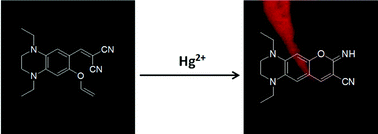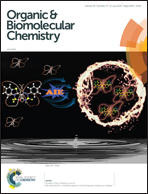A red-emitting fluorescent probe for the detection of Hg2+ in aqueous medium, living cells and organisms with a large Stokes shift†
Abstract
A red-emitting fluorescent probe has been developed for the selective and sensitive detection of Hg2+. With the addition of Hg2+, the solution of probe 1 displayed a remarkable fluorescence enhancement (102 fold) with λemmax = 625 nm and a large Stokes shift (150 nm). The detection limit of this probe was as low as 7.1 nM based on S/N = 3. This probe exhibited a good performance in detecting Hg2+ in real water samples, living cells and organisms.



 Please wait while we load your content...
Please wait while we load your content...